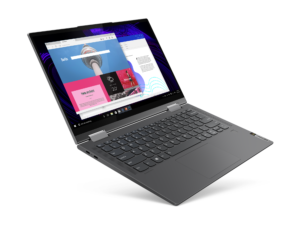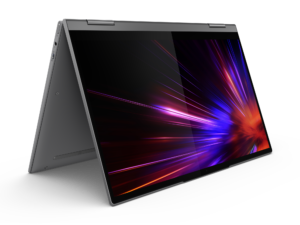Now we come to the issue of network-infrastructure equipment that will need to support the increasing demands placed on the home network by the previously-mentioned smartphones, tablet computers and Internet-enabled TVs.
Network Infrastructure
Network Connectivity
Some newer chipsets have appeared which will increase network bandwidth for the 802.11n Wi-Fi segment and the HomePlug AV segment. The current implementations may use manufacturer-specific implementations which won’t bode well with the standards.
The first new “call” is the 450Mbps 802.11n WPA2 WPS Wi-Fi segment which is being provided by most network makes for their midrange routers and access points. Access points and routers that work with this specification use three 802.11n radio streams to maintain the high throughput. The full bandwidth may be achieved if the client device is equipped with an 802.11n wireless network adaptor that supports the three streams but your existing devices may benefit due to reduced contention for the wireless bandwidth due to the access point / router offering three streams.
Most of the routers shown at the Consumer Electronics Show this year that support the 3-stream 450Mbps level for the 802.11n wireless network functionality also offered dual-band dual-radio operation to the same specification. Here, these devices could work on both the 2.4GHz band and the 5GHz band at this level of performance.
Some manufacturers were trying out the idea of a 60GHz high-bandwidth media network which may be based on a Wi-Fi (802.11 technology) or other proprietary scheme. This could lead to three-band multimedia routers and access points that use 2.4GHz and 5GHz for regular whole-home wireless networking and 60GHz for same-room wireless networking.
The second new “call” is the 500Mbps throughput being made available on high-end HomePlug AV devices. These powerline network devices may only achieve the high bandwidth on a segment consisting of the high-bandwidth devices that are based on the same chipset. Here, I would wait for the HomePlug AV2 standard to be fully ratified before you chase the 500Mbps bandwidth on your HomePlug segment. Of course, these devices can work with HomePlug AV segments.
The third new call is for midrange high-throughput routers to have Gigabit on the WAN (Internet) port as well as the LAN ports. This is more relevant nowadays as fibre-based next-generation broadband services are rolled out in most countries.
Everyone who exhibited network-infrastructure equipment offered at least one 450Mbps dual-band dual-radio router with Gigabit Ethernet on the WAN (Internet) connection as well as the wired-LAN connection. As well, most of these routers are equipped with circuitry that supports QoS when streaming media and some of them have a USB file-server function which can also provide media files to the DLNA Home Media Network.
Trendnet also offered an access point and a wireless client bridge that worked to this new level of 802.11n performance. They also demonstrated power-saving circuitry for Wi-Fi client devices which throttles back transmission power if the device is in the presence of a strong access point signal for their network. This was ostensibly to be “green” when it comes to AC-powered devices but would yield more real benefit for devices that have to run on battery power.
They also ran with the TPL-410AP which is a HomePlug AV Wireless-N multi-function access point. Another of those HomePlug access points that can “fill in the gap” on a wireless network or extend the Wi-Fi network out to the garage, barn or old caravan.
They also issued the TEW-656BRG 3G Mobile Wireless N Router, which is an 802.11n “MiFi router” that is powered by USB and works with most 3G / 4G modem sticks available in the USA. It is of a small design that allows it to be clipped on to a laptop’s lid or a small LCD monitor.
TP-Link had their 450Mbps three-stream dual-band dual-radio router with Gigabit on bot WAN and LAN Ethernet connections. As well they fielded a single-stream 150Mbps USB stick as the TL-WNT23N.
They also tried their hand with IP surveillance with the TL-SC4171G camera . This camera can do remote pan-tilt, and 10x digital zoom. It connects to the network via Ethernet or 802.11g Wi-Fi (not that much chop nowadays) and is equipped with an IR ring for night capture, as well as a microphone and speaker.
Netgear were more active with the 450Mbps three-stream routers with Gigabit LAN. Two of the models are broadband routers with Gigabit WAN, while one is an ADSL2 modem router which I think would serve the European and Australian markets more easily. The top-end model of the series has a USB file server function which works with the DLNA Home Media Network and also with Tivo “personal-TV devices”.
They also released the XAV5004 HomePlug AV switch which is the 500Mbps version of the their earlier “home-theatre” four-port HomePlug switch. Of course, they released the XAV2001 which is a compact “homeplug” adaptor which connects to the regular standards-based HomePlug AV segment.
They also have released the MBR1000 Mobile Broadband Router which works with 3G/4G wireless broadband or Ethernet broadband. This unit is being provided “tuNrnkey” for Verizon’s new 4G LTE service.
Netgear have also fielded the VEVG3700 VDSL2/Gigabit Ethernet dual-WAN router with Gigabit Ethernet LAN, Cat-IQ DECT VoIP phone base station. This device, which is pitched at triple-play service providers also supports DLNA server functionality. As well, they also had a DECT VoIP kit available for these providers
As well, Netgear have tried their footsteps in to IP-surveillance for home and small business with a camera and an Android-driven screen for this purpose.
D-Link’s network hardware range include the three-stream 450Mbps routers with Gigabit WAN/LAN, a multifunction access point / repeater for the 802.11n network as well as a new DLNA-enabled network-attached storage range
As far as the MoCA TV-coaxial-cable network is concerned, Channel Master is the only company to release any network hardware for this “no-new-wires” network. It is in the form of a MoCA-Ethernet 4-port switch for the home theatre.
“Mi-Fi” wireless-broadband routers
Every one of the US cellular-telecommunications carriers are catching on to the 4G bandwagon not just with the smartphones and tablets but with the wireless-broadband routers.
Sprint have a unit for their WiMAX service while Verizon are fielding a Samsung LTE “Mi-Fi” as well as the aforementioned Netgear MBR1000 router.
Computer hardware and software
Monitors
Some of the companies who manufacture monitors are looking at the idea of “Internet-connected” monitors which have a basic Web browser in them so you don’t have to fire up a computer to view the Web.
CPU/GPU combo chips
These new processor chips combine a CPU which is a computer’s “brain” as well as the graphics processor which “draws” the user interface on to the screen. AMD and Intel were premiering the “Accelerated Processor Units” and the Core “Sandy Bridge” prcessors respectively at the CES this year.
Intel were trumpeting the fact that this technology could make it harder to pirate movie content but this is more about mainstream computing and small-form-factor hardware being behind this space and power saving processor hardware.
Sony had lodged a commitment to AMD to use the Zacate “Accelerated Processor Unit” in some of their VAIO laptops.
Other hardware
AMD haven’t forgotten the “performance computing” segment when it comes to processor chips and released the quad-core and 6-core “Phenom” desktop and gaming-rig CPUs.
Seagate have also made the “GoFlex” removable / dockable hard disks a standard by building alliances with third-parties to make hardware that works to this standard. Could this be another “VHS-style” alliance for dockable hard disks?
Microsoft also used this show to premiere their Touch Mouse which uses that same touch operation method as Apple’s Magic Mouse. Do I see an attempt for them to “snap at” Apple when it comes to “cool hardware” as well as software?
The Microsoft Platform
There has been some activity with the Microsoft Windows platforms now that set-top boxes and tablet computers are becoming the “order of the day”
One direction Microsoft is taking is to port the Windows Platform, which was primarily written for Intel-Architecture processors, to the Acorn ARM-architecture processors. The reason that this port is taking place is due to these energy-efficient RISC processors being commonly used in battery-driven applications like tablet computers. They are also popular with other dedicated multimedia devices like set-top boxes and TV applications.
As well, Microsoft will be working on a lightweight Windows build for TV applications like set-top boxes. This is although they have previously written Windows-CE builds for this class of device.
Microsoft also want to make a variant of the Windows Phone 7 for tablet computers and are starting work on the Windows 8 project.
Similarly, Somsung has demonstrated the second incarnation of the Microsoft Surface platform This one comes in a slimmer table-based form rather than a unit that is as thick as the 1980s-style “cocktail-table” arcade game machine.
Conclusion
The Consumer Electronics Show 2011 has certainly put the connected home on the map. This is due to affordable smartphones and tablet computers becoming more ubiquitous and Internet-provided video services becoming an increasing part of American home life.
It will be interesting to see what will happen for the other “pillar” of the consumer-electronics trade fair cycle – the Internationaler Funkaustellung; and how more prevalent the Internet TV, smartphone and tablet computer lifestyle will be in Europe and Asia.

 The use of a Qualcomm Snapdragon 8cx as the Lenovo Flex 5G’s CPU is primarily about implementing CPU technology that has higher performance compared to what is offered in a smartphone or mobile-platform tablet. This is due to the computer being in a larger chassis and not having the thermal constraints associated with the kind of housing a smartphone would have.
The use of a Qualcomm Snapdragon 8cx as the Lenovo Flex 5G’s CPU is primarily about implementing CPU technology that has higher performance compared to what is offered in a smartphone or mobile-platform tablet. This is due to the computer being in a larger chassis and not having the thermal constraints associated with the kind of housing a smartphone would have.
![Map of Europe By User:mjchael by using preliminary work of maix¿? [CC-BY-SA-2.5 (http://creativecommons.org/licenses/by-sa/2.5)], via Wikimedia Commons](https://homenetworking01.info/wp-content/uploads/2014/06/512px-Blank_map_europe_coloured.svg_-300x229.png)